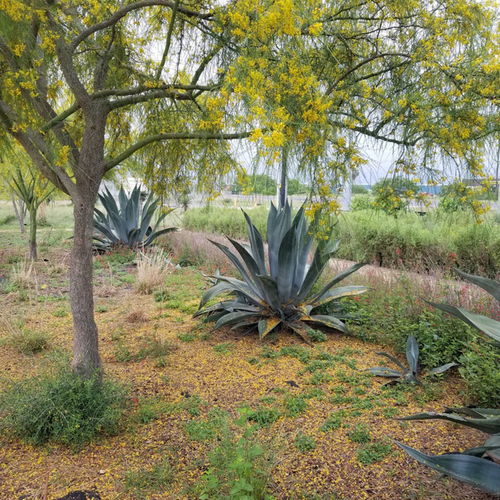Happy Friday GPODers!
We’re wrapping up our week of diverse garden spaces with Lisa Adam in Texas. Lisa lives very close to the southernmost point of Texas, and shared photos of her garden in Weslaco last fall (Check out that post here: Lisa’s Wildlife Haven Near the Southernmost Point of Texas), but today she’s sharing a recent visit to a really cool ecotourism center that highlights and educates on the the ecosystems native to this unique region.
My name is Lisa Adam and I live in Weslaco, Texas. (I previously submitted photos from my retirement cottage.) Today, I’m taking readers to the South Texas Ecotourism Center (STEC). Located in Laguna Vista, Texas, STEC is on route to the popular beach destination, South Padre Island. STEC promotes exploration of the region’s nature through gardens, interpretive exhibits and sculpture, bird blinds, and a boardwalk overlook. Today I’ll focus on some of its iconic plants. It’s zone 10 in this region, so excuse the cloudy skies, which we appreciate as a relief from the sun.
The low-slung STEC building is a modern take on the traditional dog-trot, with an open passageway between two wings. In front of the building is a modernistic garden featuring deep rows of massed plants, mostly native. Visible in the photo are rows of yellow-blooming retama tree (Parkinsonia aculeata, Zones 8–11), century plant (Agave americana, Zones 8–10), non-native blue plumbago (Plumbago auriculata, Zones 9–11), triangle cactus (Acanthocereus tetragonus, Zones 9–11), and non-native aloe vera.
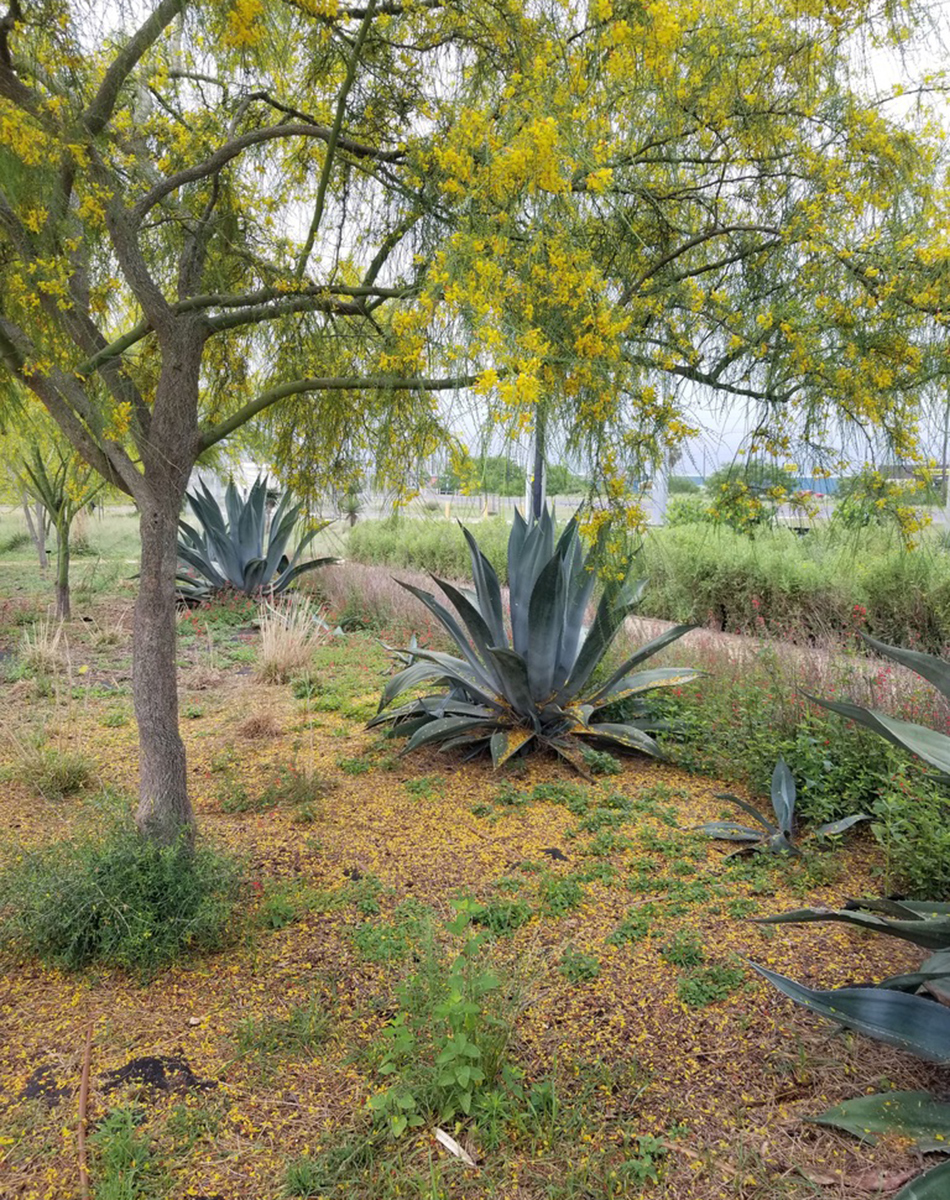 Another view of the retama and century plants.
Another view of the retama and century plants.
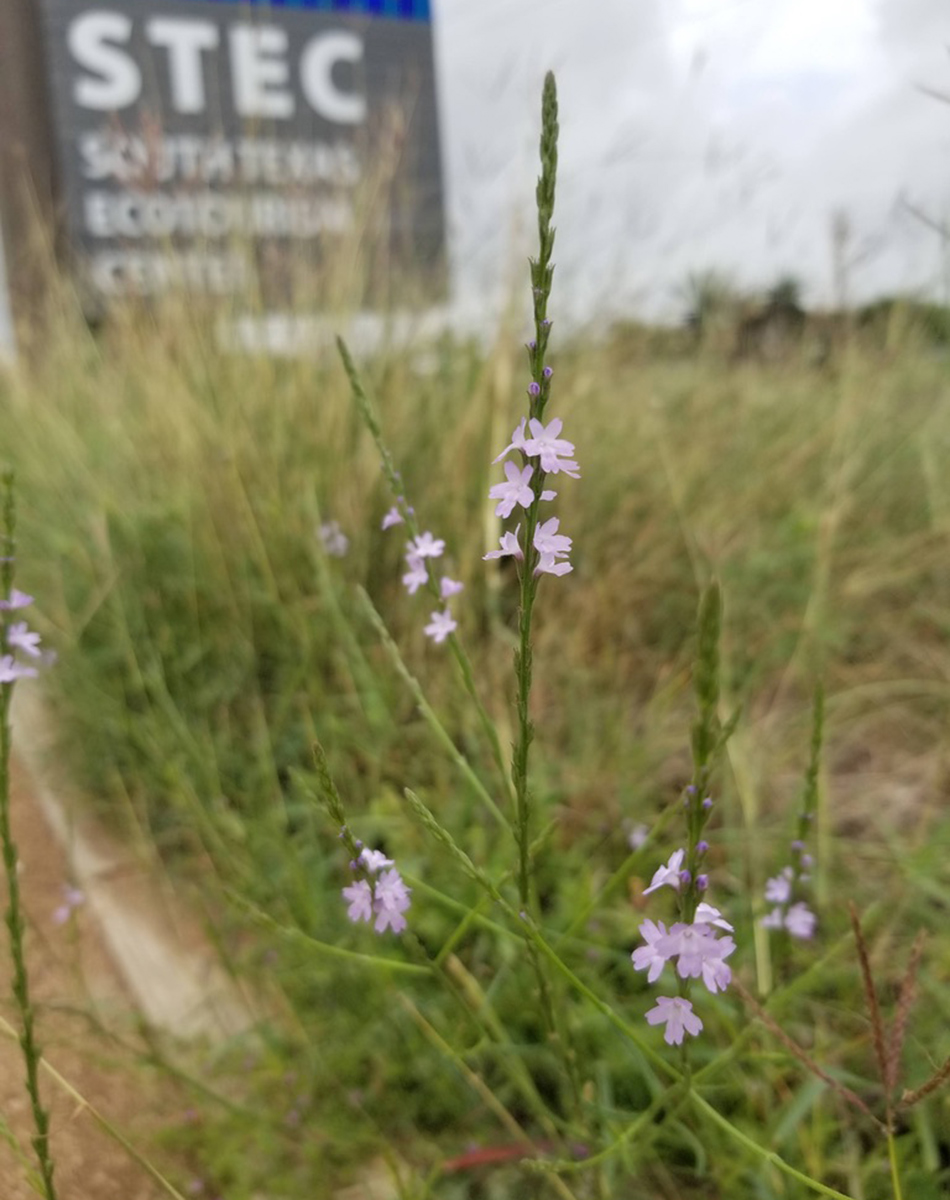 Deep rows of tough native grasses line the heat-radiating road frontage. Here, a delicate Texas vervain (Verbena halei, Zones 7–10) stands out against the grass.
Deep rows of tough native grasses line the heat-radiating road frontage. Here, a delicate Texas vervain (Verbena halei, Zones 7–10) stands out against the grass.
Past the open passage of the building, visitors walk through multiple garden areas that model several different ecosystems of the region: thorn forest, savanna, and coastal prairie. Beyond those is a boardwalk that looks out over Bahia Grande, Texas’ largest wetland restoration project and part of the Laguna Atascosa National Wildlife Refuge.
Cacti feature prominently at STEC since they grow in nearly every eco-region in South Texas.
 Tasajillo (Cylindropuntia leptocaulis, Zones 9–11) is a shrub-like cactus. It’s also called Christmas cholla or Christmas cactus, because the red fruit sometimes persist until the holiday season if they are not all eaten by birds.
Tasajillo (Cylindropuntia leptocaulis, Zones 9–11) is a shrub-like cactus. It’s also called Christmas cholla or Christmas cactus, because the red fruit sometimes persist until the holiday season if they are not all eaten by birds.
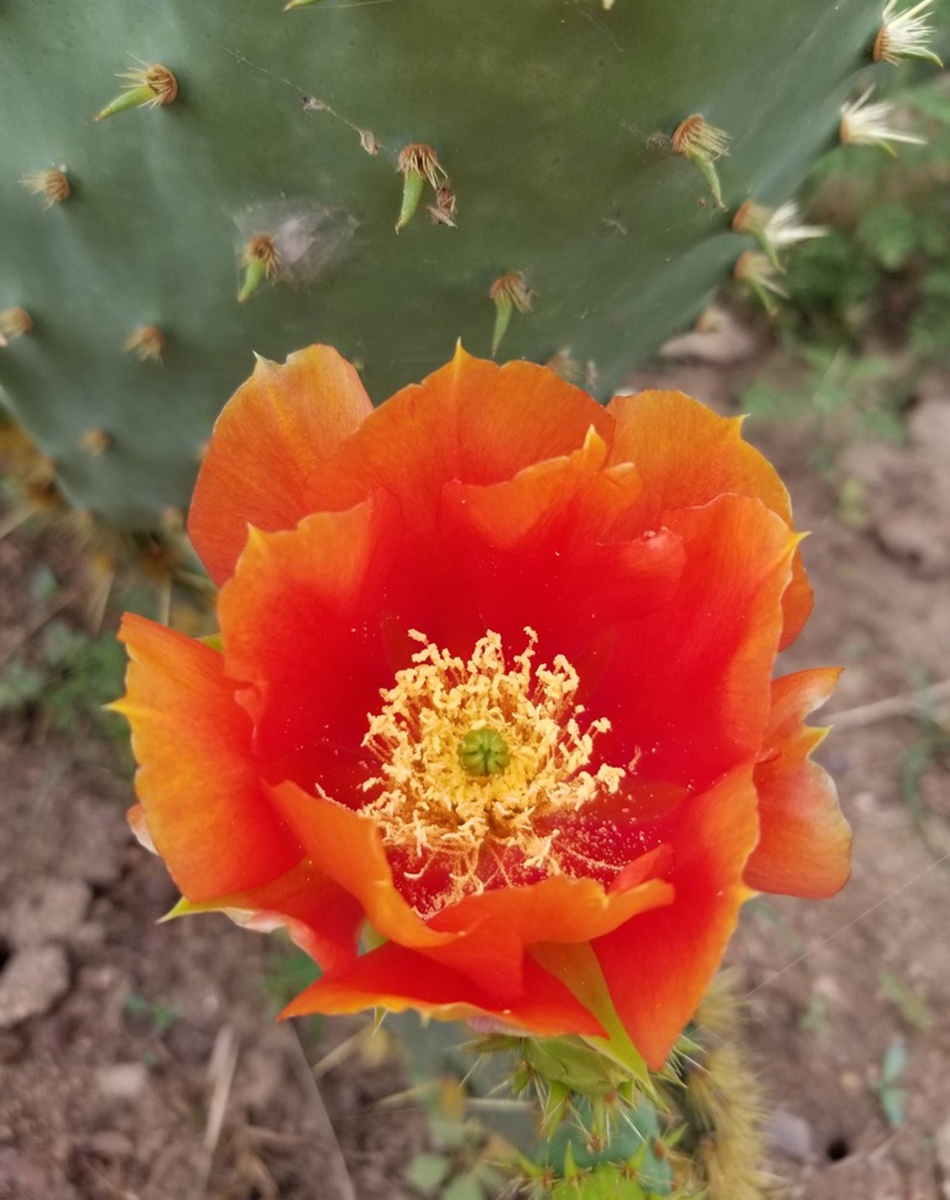 Texas prickly pear cacti (Opuntia lindheimeri, Zones 8–11) usually bloom in yellow, but occasionally in orange or red. Their wide-open blossoms give easy access to nectar and pollen for native bees.
Texas prickly pear cacti (Opuntia lindheimeri, Zones 8–11) usually bloom in yellow, but occasionally in orange or red. Their wide-open blossoms give easy access to nectar and pollen for native bees.
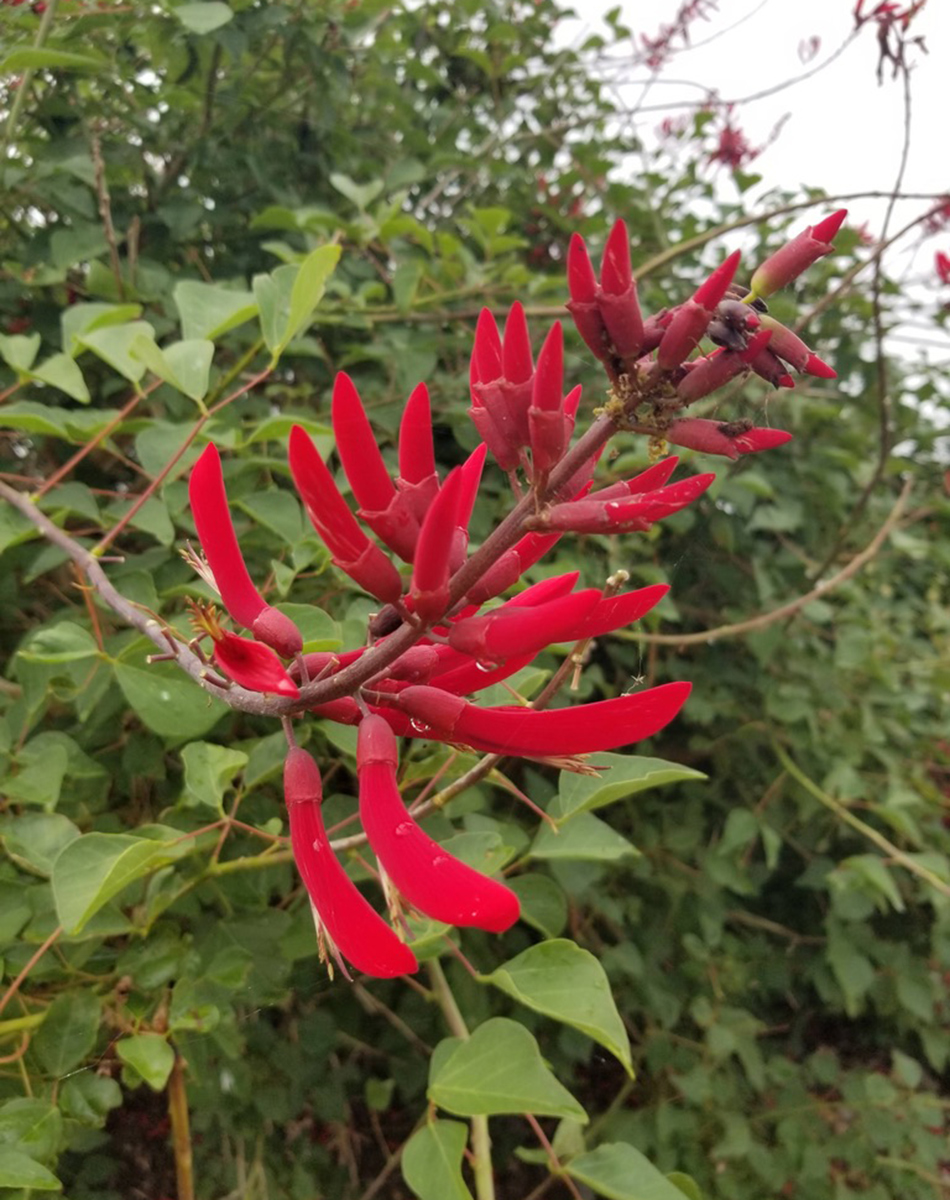 Coral bean (Erythrina herbacea, Zones 8–11) is a tall shrub, not a cactus, but it is also thorny, as well as poisonous! But its fantastic blooms make it a hummingbird magnet and a desirable ornamental in the area.
Coral bean (Erythrina herbacea, Zones 8–11) is a tall shrub, not a cactus, but it is also thorny, as well as poisonous! But its fantastic blooms make it a hummingbird magnet and a desirable ornamental in the area.
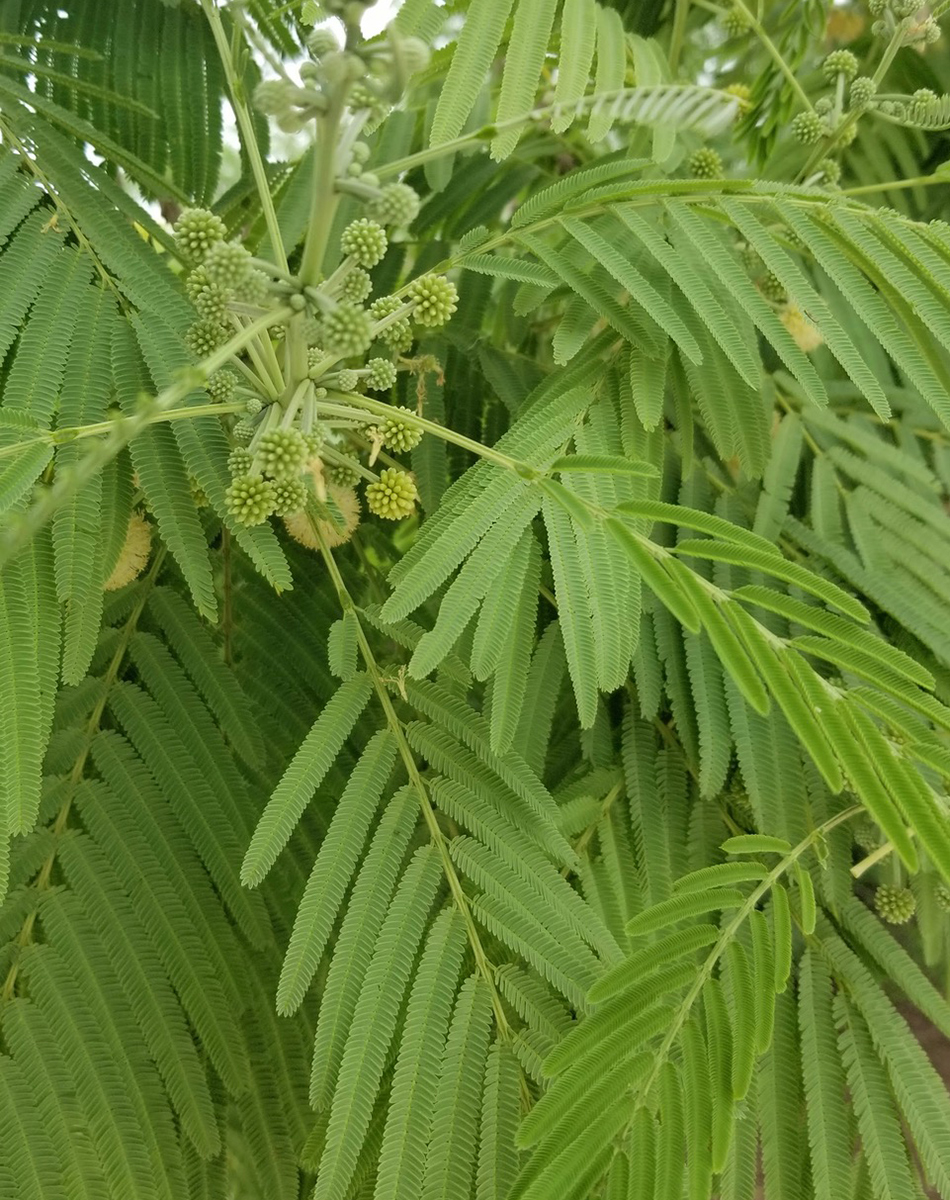 These nubby buds on the tepeguaje, or lead tree (Leucaena pulverulenta, Zones 8–11), will turn into creamy-yellow puffballs in a few days. Locally, tepeguaje is considered a good “nurse tree.” The trees grows fast, and their intricately compounded leaves provide much-needed shade for younger or smaller plants below them.
These nubby buds on the tepeguaje, or lead tree (Leucaena pulverulenta, Zones 8–11), will turn into creamy-yellow puffballs in a few days. Locally, tepeguaje is considered a good “nurse tree.” The trees grows fast, and their intricately compounded leaves provide much-needed shade for younger or smaller plants below them.
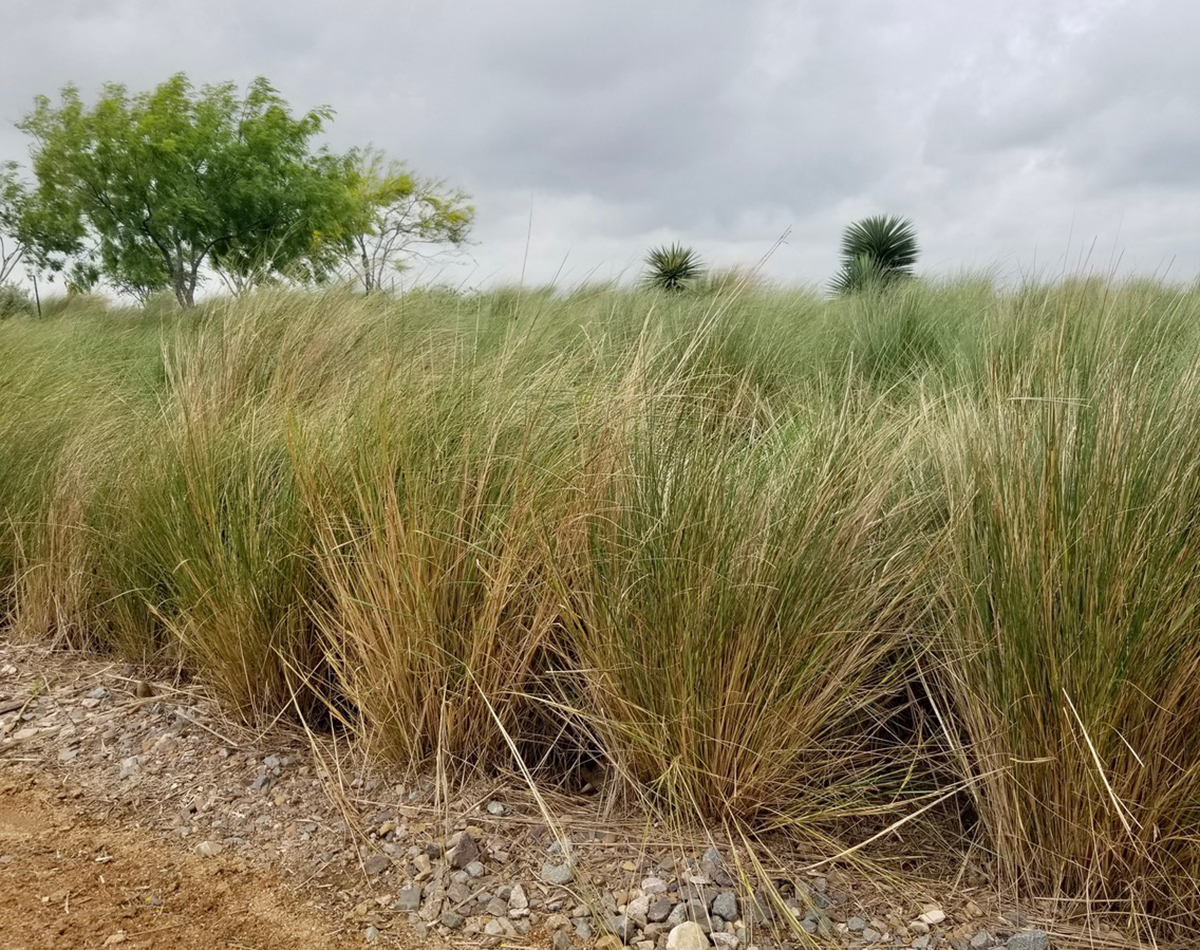 I believe the grass in this photo is Gulf cordgrass (Sporobolus spartinae, Zones 8–11). The neatly bermed edge makes clear this is a cultivated space. Behind the grass are honey mesquite trees (Prosopis glandulosa, Zones 7–11) and Spanish dagger (Yucca treculeana, Zones 7–10).
I believe the grass in this photo is Gulf cordgrass (Sporobolus spartinae, Zones 8–11). The neatly bermed edge makes clear this is a cultivated space. Behind the grass are honey mesquite trees (Prosopis glandulosa, Zones 7–11) and Spanish dagger (Yucca treculeana, Zones 7–10).
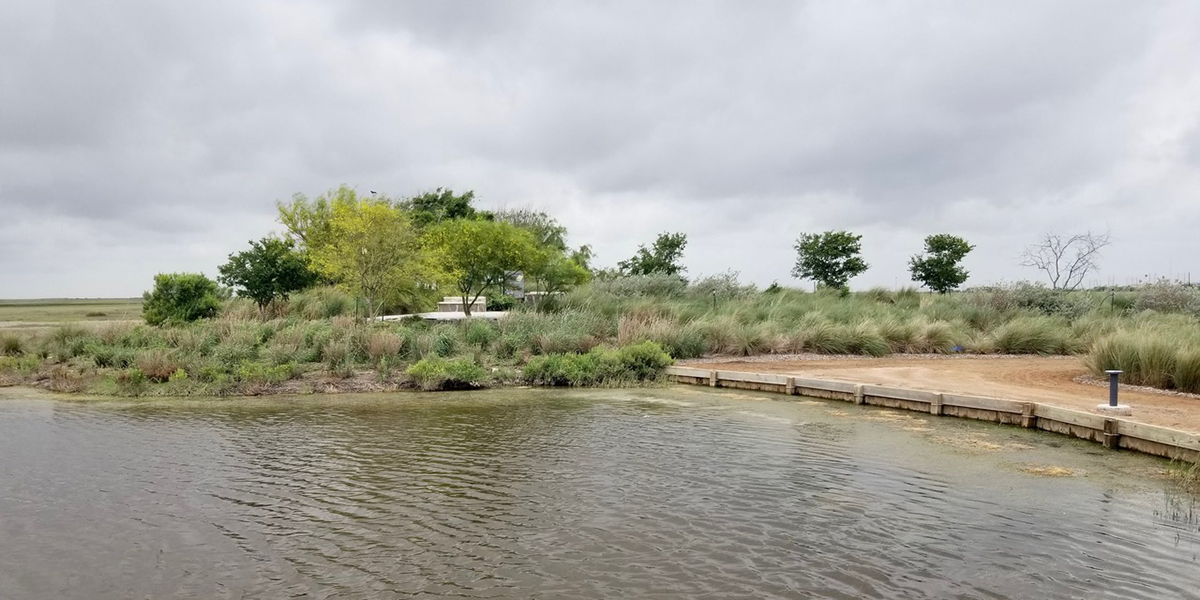 An artificial peninsula by a pond mimics the area’s lomas, which are ancient clay dunes covered with grass and scrubland. At far left in the photo, you can glimpse the coastal wetlands of Bahia Grande in the distance. Their restoration has reduced dust-caused asthma in the region, boosted the region’s fishing and shrimping industry, and provided much needed habitat for endangered species.
An artificial peninsula by a pond mimics the area’s lomas, which are ancient clay dunes covered with grass and scrubland. At far left in the photo, you can glimpse the coastal wetlands of Bahia Grande in the distance. Their restoration has reduced dust-caused asthma in the region, boosted the region’s fishing and shrimping industry, and provided much needed habitat for endangered species.
Thank you so much for sharing this incredible plant destination with us, Lisa! I can’t think of a better place to give us an insight into the incredible plant palette of your region, and your selection of highlights was a delight.
Have you visited any public gardens this season? Last week I made a trip to New York Botanic Garden that I will be sharing highlights from in the coming weeks, but I would love to see where you’ve enjoyed some special spring displays. Follow the directions below to submit photos via email, or send me a DM on Instagram: @agirlherdogandtheroad.
We want to see YOUR garden!
Have photos to share? We’d love to see your garden, a particular collection of plants you love, or a wonderful garden you had the chance to visit!
To submit, send 5–10 photos to [email protected] along with some information about the plants in the pictures and where you took the photos. We’d love to hear where you are located, how long you’ve been gardening, successes you are proud of, failures you learned from, hopes for the future, favorite plants, or funny stories from your garden.
Have a mobile phone? Tag your photos on Facebook, Instagram or Twitter with #FineGardening!
Do you receive the GPOD by email yet? Sign up here
Fine Gardening Recommended Products
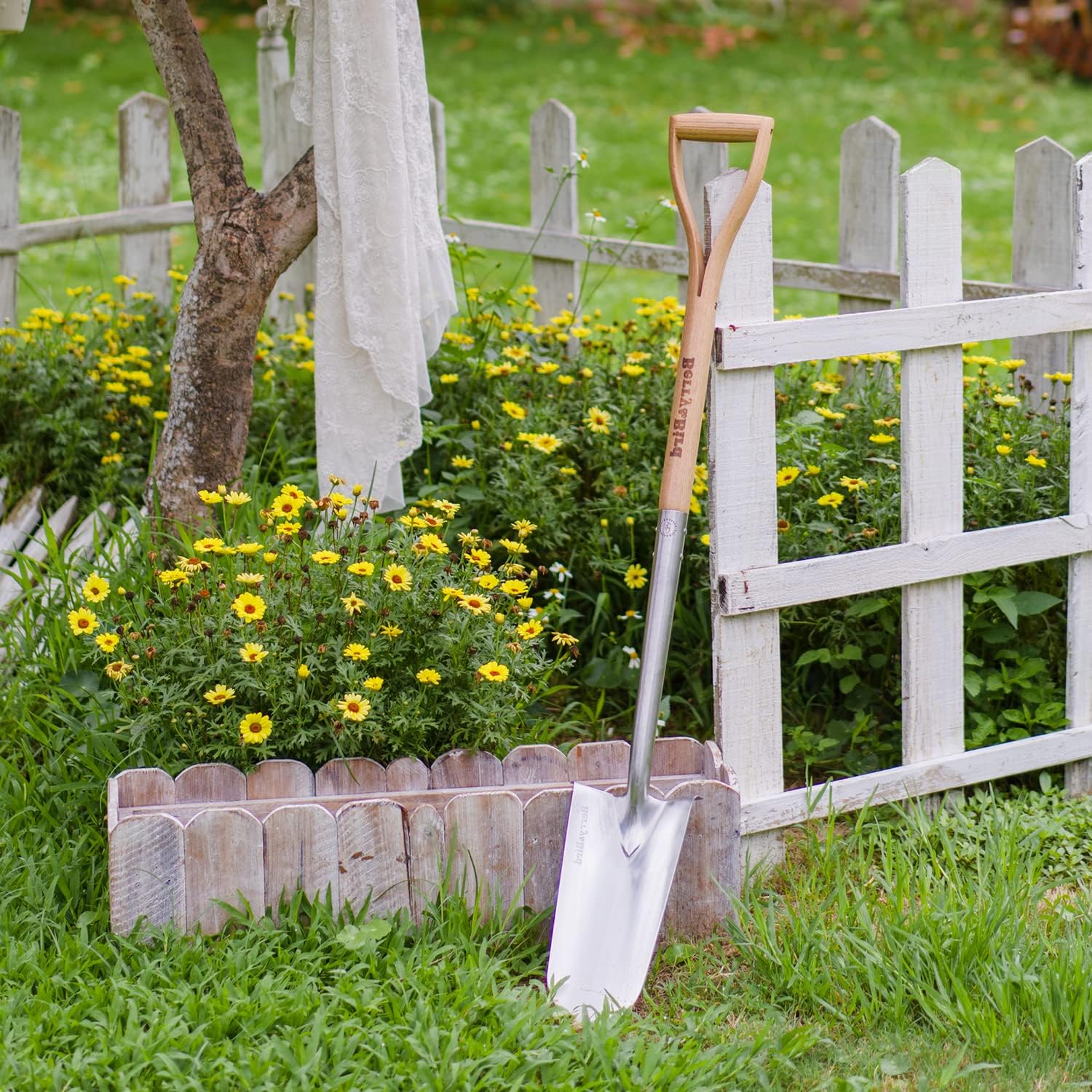
Berry & Bird Rabbiting Spade, Trenching Shovel
Fine Gardening receives a commission for items purchased through links on this site, including Amazon Associates and other affiliate advertising programs.
Ideal Tool for All Gardeners Use: Our heavy duty trenching shovel is designed by a professional gardening tool designer. Lifetime Durability: This heavy duty drain spade is made of high-quality stainless steel, it is very strong and durable, even if it is used for high-strength work, it will not bend. Ergonomic Wood Handle: The handle of this planting spade is made of ash hardwood harvested from FSC-certified forests and has an ergonomically streamlined design, making it very suitable for everyone’s hands. Multi-Use: This digging shovel is generally used for digging trenches, digging holes, transplanting, edging, moving compost, cutting thick turf and furrowing. The sharp blade allows you to cut, scoop, dig, lift and dice in hard soil.
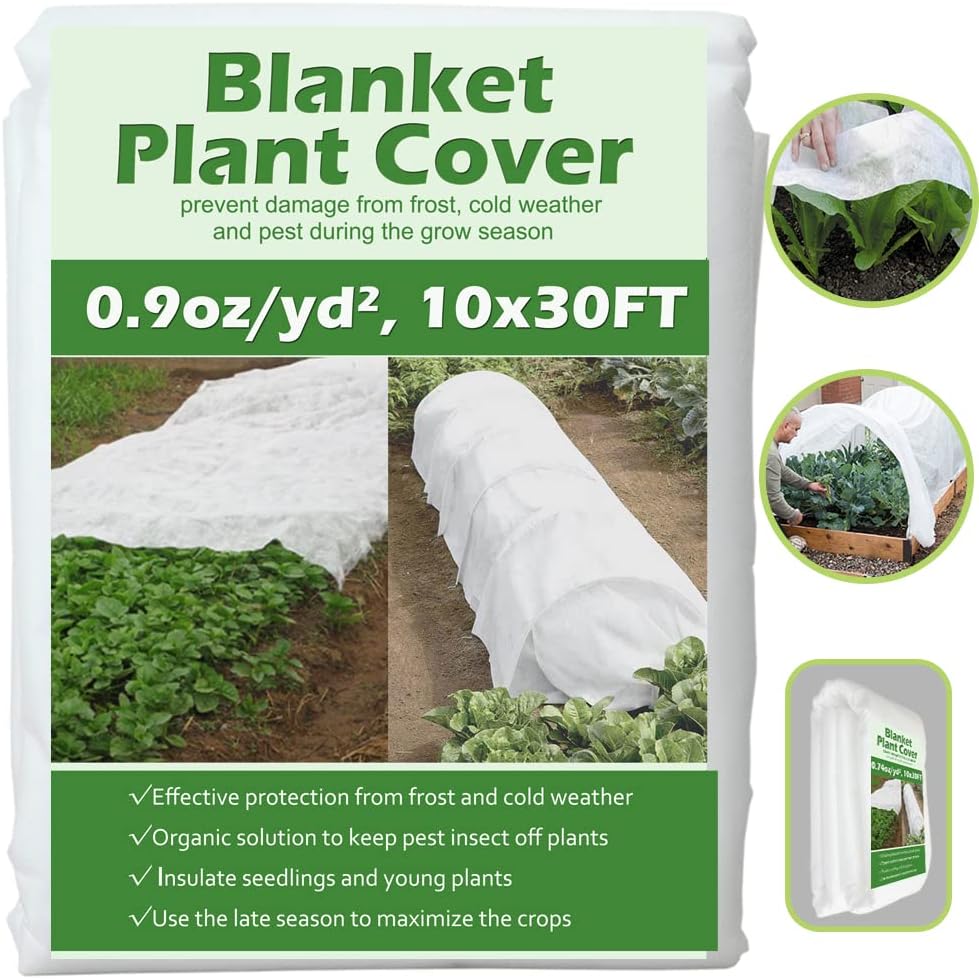
Plant Covers Freeze Protection 10 ft x 30 ft Floating Row Cover 0.9oz/yd²
Fine Gardening receives a commission for items purchased through links on this site, including Amazon Associates and other affiliate advertising programs.
Lightweight and Breathable MATERIAL Good for protecting Plant: the plant frost cover material is 0.74 oz/sq non-woven polypropylene fabric, which is lightweight, breathable, and durable. The plant blanket frost protection allows sunlight reach the plants, perfect for protecting plants from the damage of freeze or frost. Wide Application In your Garden Work. The plant row cover not only can work as a barrier against frost, but also can be a great tool for germination and good for rapid seedling growth. By using the fabric plant covers over your plant, you can start the plant earlier in the spring and extending the growing season of your plants. How to Use the Plant Covers: you can cover the plant covers for freeze over your the plants loosely directly and then secure the plant frost blanket with soil, stones or staples. You can also support the floating row covers with a hoop, make enough room for plants to breath and grow. You could also cut the plant covers into different sizes for different purposes.
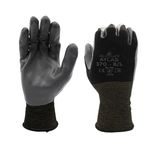
SHOWA Atlas 370B Nitrile Palm Coating Gloves, Black, Medium (Pack of 12 Pairs)
Fine Gardening receives a commission for items purchased through links on this site, including Amazon Associates and other affiliate advertising programs.
Lightweight and close-fitting for excellent dexterity. Machine washable. Breathable back of hand to reduce perspiration. Designed for easy movement and continuous wear. Ideal for aerospace, assembly, automotive, construction, final fix, gardening, manufacturing, operating machinery, packaging, precision handling, tiling, warehousing.

